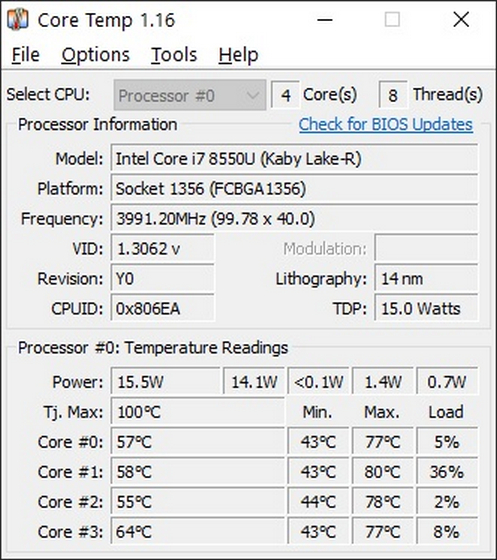How to Check CPU Temperature on Your Windows PC
One of the biggest reasons for your computer’s laggy-ness or unexpected shutdowns is overheating. To prevent your PC from hanging or slowing down every now and then, you’ll need to maintain its optimal thermal range. For that, you’ll have to check CPU temperature on your PC from time to time. Here, we’ll tell you how to check your computer’s CPU temperature so that you can prevent it from overheating, which should not only result in faster performance, but also increase its lifespan.
Check CPU Temperature on Your PC for Optimal Performance
You can check CPU temperature either in your computer’s BIOS/UEFI or through third-party software, because Windows does not offer a built-in tool for that. So without further ado, let’s see how you can check CPU temperature on your PC for optimal performance.
1. Check CPU Temperature in the BIOS
To enter the BIOS, you’ll have to power on your PC and repeatedly press a designated key before it boots up. The key varies from one vendor to another, so you’ll need to perform a web-search to determine the right key for your PC’s make and model. Usually, it’s ‘F2’ or ‘DEL’ (Delete). You’ll find the temperature under a BIOS menu typically called ‘Hardware Monitor’, ‘PC Status’ or something similar.

2. Check CPU Temperature with Core Temp
If checking the BIOS seems too complicated, you can download and install a Windows app called ‘Core Temp’ that does exactly what it says on the box. It is a compact, no fuss, reliable, tiny yet powerful program to monitor processor temperature and other vital information on your PC. Once you run the software, you’ll immediately see the CPU temperature of your PC on the app’s home screen.

Download Core Temp: (Free)
What is a Good CPU Temperature?
There’s no such thing as a universal ‘good CPU temperature’ because the ideal temperature for CPU/GPU/RAM differs based on the chips and how they are binned. That includes their TDP as well as their input Vcore, because the amount of heat generated by a semiconductor chip is directly related to the amount of voltage it draws.

However, for most cases, temps around 40-degree Celsius is ideal, but anything up to 60-degrees is acceptable. Unless it’s for small periods of time, temperatures around 70-degrees or more should be a matter of concern. Anything in excess of 80-degrees could damage your PC, so it’s best to switch it off and let it cool down before turning it back on again.
Reasons for High CPU Temperature
One of the biggest causes of excess heating in PCs is the built-up of dust and cobwebs on the fans and other components inside your case. This can inhibit airflow which is essential for the efficient cooling of any semiconductor chip, including the CPU, GPU and RAM in your PC.

If your PC keeps registering high temperatures without playing any demanding games or running resource-intensive software, you should check for possible malware infestation. Crypto-mining scripts and other data-harvesting software running in the background tend to increase resource usage on computers, increasing core temps and reducing system performance.
How to Lower CPU Temperature on Your PC
To lower the temperature of your desktop computer, open up the case and use canned air and a cloth to clean it up, paying particular attention to both the CPU cooling fan and the case fans. With a laptop, you’ll have to use a little more elbow grease to gain access to the inside. Once there, use the same procedure to clean up the device. This should reduce CPU temperature in most cases.

If that doesn’t help, scan your PC for possible malware. To do that, you should check out our list of the best Antivirus programs on Windows. Also uninstall the programs that you no longer use, because some of them might be using up too much system resource in the background and making the CPU overwork, raising its temperature and reducing its lifespan.
To check which processes are taking up too much resource, open the Task Manager by pressing Ctrl+Shift+Esc simultaneously. Then check for errant processes that are hogging your CPU or drawing too much power. In all likelihood, they are the ones responsible for your PC’s overheating problem. Uninstall them if they’re not used much or look for an alternative if you must use a similar program.
Easily Check CPU Temperature on Your Computer
Persistently high CPU temperatures are a surefire way to damage your computer. So take a look at the above methods to easily check CPU temperature on your PC and deal with it according to the steps described above. If you follow the guide to a T, you'll hopefully prevent the premature death of your beloved computer and even improve its performance while at it. So how hot does your computer run? Let us know in the comments down below.



0 Comments